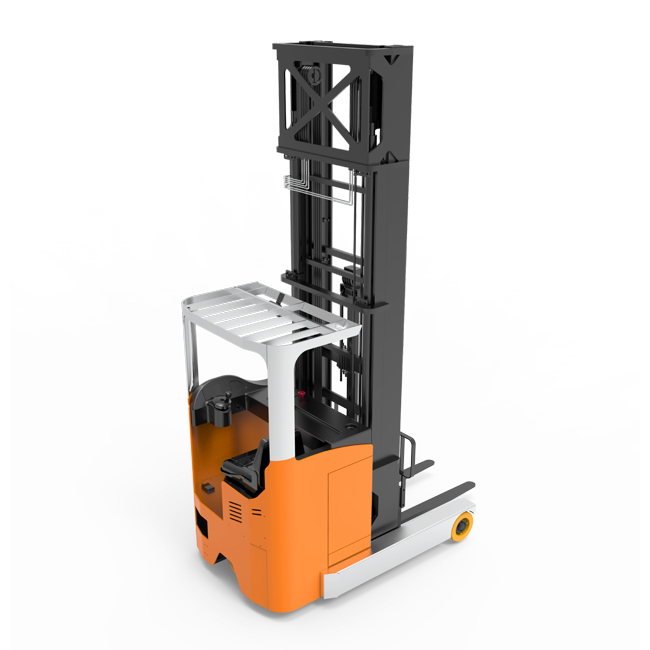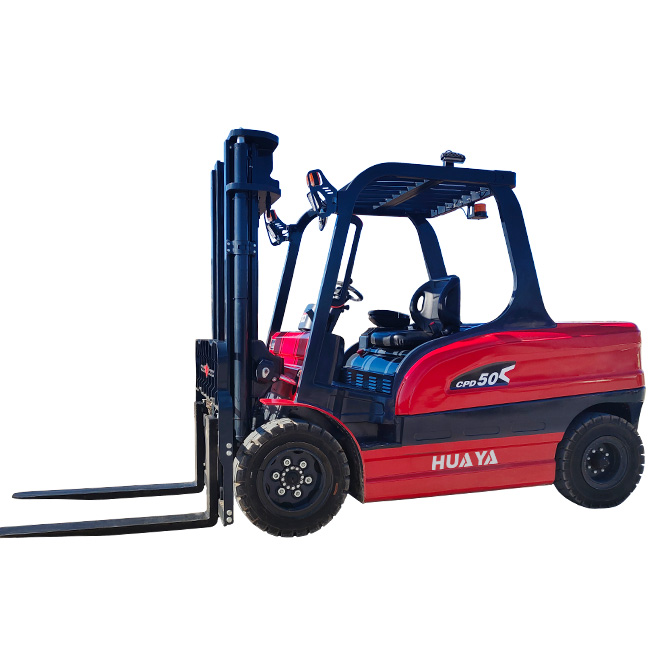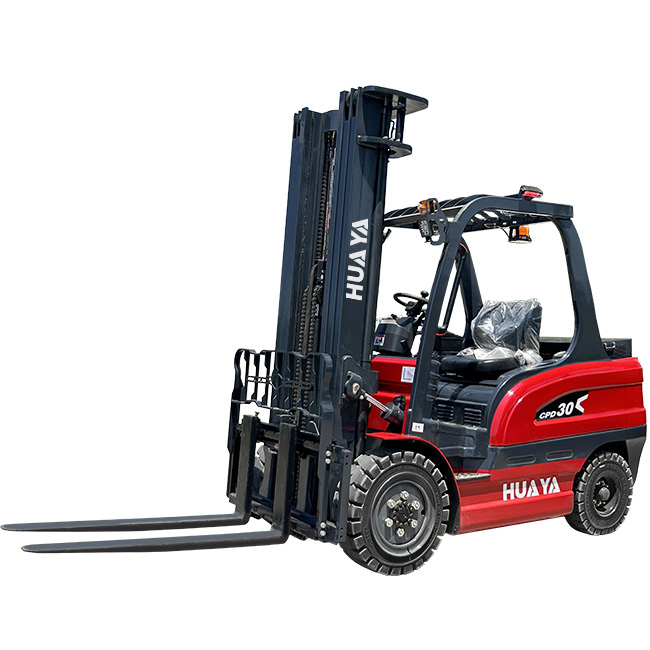Where is the Balance Point on a Reach Truck?
22 Aug 2025
A reach truck is a specialized type of forklift widely used in warehouses and distribution centers where space optimization and high stacking are essential. While reach trucks provide excellent maneuverability and the ability to reach tall racking systems, their safe and efficient operation relies heavily on understanding load balance. One of the most important concepts in this regard is the balance point.
What Is a Balance Point on a Reach Truck?
The balance point on a reach truck refers to the position at which the truck and its load remain stable without tipping forward, backward, or sideways. It is determined by the relationship between the center of gravity of the truck (including the load) and the stability triangle formed by the truck’s wheels.
If the center of gravity stays within the stability triangle, the truck remains stable.
If the center of gravity moves beyond the triangle (for example, by overloading or tilting too far), the truck risks tipping over.
This balance point is not a fixed spot—it shifts depending on load weight, load height, mast extension, and truck movement.
The Stability Triangle
The stability triangle is a core principle in forklift and reach truck safety. It helps operators visualize where the balance point lies.
For a reach truck, the triangle is formed between the two front load wheels and the pivot point at the rear steering wheel.
The balance point is essentially the area within this triangle where the combined center of gravity of the truck and the load must remain.
If the center of gravity moves outside the stability triangle—such as when lifting a heavy pallet too high—the truck becomes unstable.
The Role of the Center of Gravity
The center of gravity (CG) is the exact point where the weight of the reach truck and its load is evenly distributed.
Without a load, the CG is closer to the truck’s rear due to the heavy counterbalance.
When lifting a load, the CG shifts forward toward the load.
The higher and heavier the load, the further forward the CG moves.
The balance point is the position at which this CG still lies within the stability triangle, ensuring the truck remains upright.
Where Is the Balance Point Located?
On a reach truck, the balance point is located near the front axle, between the two load wheels. However, the exact position shifts based on conditions:
Unloaded Truck:
The balance point is closer to the rear, as the truck’s counterweight dominates.
Loaded Truck:
The balance point shifts forward depending on the load’s weight and mast height.
When Extending the Mast:
The further the mast reaches, the more the balance point moves forward, reducing overall stability.
In summary, while the physical point lies near the front load wheels, the functional balance point changes dynamically.
Factors That Affect the Balance Point
Several factors influence the location of the balance point on a reach truck:
Load Weight – Heavier loads push the balance point forward.
Load Height – Raising the mast increases leverage and shifts the balance point outward.
Load Placement – Incorrectly centered or uneven loads affect stability.
Truck Speed and Turning – Quick turns can shift the center of gravity outside the triangle.
Surface Conditions – Uneven floors may change how the balance point is distributed.
Why Is the Balance Point Important?
Understanding the balance point on a reach truck is critical for:
Safety: Preventing tip-overs and accidents.
Efficiency: Ensuring stable and smooth load handling.
Load Protection: Avoiding damage to goods during lifting or stacking.
Operator Confidence: Skilled operators use the balance point to handle loads safely at height.
Without awareness of the balance point, operators risk accidents that can cause injuries, product damage, and costly downtime.
How Operators Can Maintain Balance
Operators play a key role in keeping the balance point within the stability triangle. Here are some best practices:
Do not exceed load capacity – Always check the data plate.
Keep loads low while traveling – This minimizes CG shift.
Tilt the mast back slightly – Helps stabilize the load.
Avoid sudden stops or sharp turns – Prevents CG from moving outside the triangle.
Operate on level ground when possible – Uneven ground increases tipping risk.
Common Mistakes That Disrupt the Balance Point
Many accidents occur because operators unintentionally push the center of gravity outside the balance zone. Common errors include:
Overloading beyond rated capacity.
Lifting loads too high without proper stabilization.
Driving too fast with an elevated load.
Misjudging load placement inside racking.
By avoiding these mistakes, operators can maintain the balance point and ensure safer operations.
Balance Point vs. Fulcrum Point
It’s important to distinguish between the balance point and the fulcrum point:
Fulcrum Point: The front load wheels act as the pivot or fulcrum.
Balance Point: The shifting location of the CG relative to the fulcrum and stability triangle.
When lifting a load, the truck essentially pivots on its front wheels, making them the fulcrum. The balance point determines whether the truck tips forward or remains stable.
Training and Safety Standards
Regulatory bodies like OSHA (Occupational Safety and Health Administration) require forklift operators to undergo training that includes understanding load balance, center of gravity, and stability principles.
Training ensures operators can:
Identify the truck’s stability triangle.
Understand the effects of different load weights and heights.
Safely maneuver in narrow aisles and high racking systems.
Practical Example of the Balance Point
Imagine lifting a 1,000 kg pallet with a reach truck:
At ground level, the load is stable because the CG is low and within the triangle.
As the mast extends to 5 meters, the balance point shifts outward, making the truck more prone to tipping forward.
If the pallet is off-center or too heavy, the CG may cross the stability triangle, causing instability.
This example shows how the balance point is constantly changing depending on real-world factors.
The balance point on a reach truck is not a single fixed spot but a dynamic position that shifts based on load weight, load height, and truck movement. It is closely tied to the stability triangle and the center of gravity, which together determine whether a truck remains stable or risks tipping over.
For operators, understanding and respecting the balance point is essential for safe, efficient, and reliable operations. By following best practices—such as keeping loads within capacity, traveling with loads low, and avoiding sudden movements—operators can maintain balance and maximize productivity while minimizing risks.
In short, the balance point is the invisible line between stability and instability, and mastering it is the key to safe reach truck operation.




